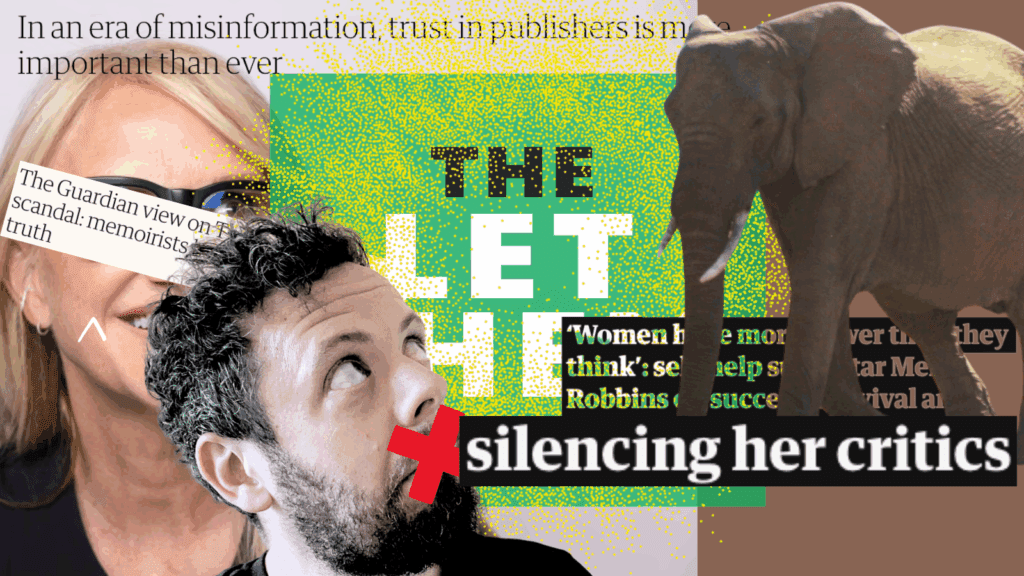The Trouble With Silencing Criticism

Criticism helps shape us, sharpen us, and call us back into alignment when we’ve veered off course. However, it can also derail us, especially when it hasn’t been asked for. We might change direction based on our perception of what the criticism is saying (listening to unsolicited and unhelpful feedback), or stall because we fear how people will react when we share ourselves with the world.
For some highly sensitive individuals, criticism isn’t just uncomfortable; it can be disruptive. For example, it might feel like a threat to one’s sense of belonging, safety, and identity. Alternatively, it might be filtered through a people-pleasing lens, which assumes that the critic is correct and all feedback and advice must be followed. Sometimes, the fear of getting it wrong leads to a quiet erasure of self, reshaping one’s life to comply and avoid criticism altogether. Resistance to judgement and disapproval might prevent us from exploring and sharing our creativity.
But we need to model and witness healthy responses to feedback, and to understand that not all criticism is hate. Public discourse has become dominated by those who respond to criticism not with maturity, curiosity, or healthy boundaries and self-understanding, but with defensiveness, dismissal, and silencing.
When Power Meets Critique
The Mel Robbins ‘Let Them’ situation, which I have been documenting over the past six months, provides a good example of this. In response to a well-evidenced critique of the origin story behind her viral “Let Them Theory,” Robbins has avoided directly addressing the concerns.
Instead, the narrative around her has reframed these questions as attacks. Her followers, echoing the tone set by Robbins herself, often label critics as haters or jealous detractors. The Guardian’s headline even describes her as successfully “silencing her critics”. It references the discovery story and accusations that she plagiarised the idea from the “Let Them” poem by Cassie Phillips.
This matters and has reaching implications.
Because when someone with a large platform and significant power and influence uses silence, spin, or redirection instead of responding in good faith, it doesn’t just affect the immediate situation; it shapes the culture and climate we are building together. And while this situation might seem trivial or small-fry on the backdrop of the bigger picture right now, it doesn’t require a stretch to see parallels and connections to higher-profile situations.
Silencing criticism by ignoring, deflecting, and reversing it sends the message that it’s not safe to speak up. We cannot trust the people and processes we ought to have confidence in to act with integrity and honesty. When public figures escape accountability by turning critique into an attack narrative, it contributes to a widespread erosion of trust, and that affects us all.
Silence Begets Silence
For those of us already feeling hesitant about being visible, this kind of dynamic can confirm our worst fears:
“If this person gets that much backlash, what chance do I have? She’s rich, famous, confident, and surrounded by a team. I wouldn’t cope. I’d crumble. So maybe I’ll make myself small, stay hidden, and keep quiet.”
But there’s a vital difference here.
Holding someone to account when things don’t add up is different from criticising their effort. For example, when criticism centres on verifiable, misleading words or actions, it’s not the same as telling someone their work sucks. However, we are increasingly seeing accountability funnelled down this narrow pipeline, which equates accountability with hate. In response, those being silenced either raise their voices or fade away. This erodes our capacity for nuance and our ability to recognise differences across situations.
We need channels for legitimate criticism, especially the kind that highlights inconsistencies, dishonesty, or ethical incongruence, without reducing it to an attack. Without this, we reduce everything to a binary of love or hate, support or sabotage, cheerleader or troll. And in doing so, we shut down the middle ground where we can move forward together.
Types of Criticism and Their Weight
Not all criticism is the same. Here are a few broad categories to consider:
- Integrity Criticism – When actions, words, and values don’t align. The critic calls out the gap between words and actions. Or it might draw attention to an element that is dishonest or pretending to be something it’s not (intending to have people believe something untrue).
- Talent Criticism – Subjective assessments of skill, taste, or creative quality. These sting, but they’re often based on personal preferences rather than moral issues.
- Expectation Criticism – When something doesn’t meet the expectations someone had. It’s not always about the work itself, but the gap between hope and outcome. This may be fair (if there was a contract or agreement in place beforehand) or unfair (if the critic has set an arbitrary standard that the other person is unaware of). Or it might target a person’s boundaries, i.e. you’re being selfish, you’ve changed, etc, which may reflect unmet (or unspoken) expectations rather than true missteps.
- Identity Criticism – When someone is perceived as not fitting or belonging based on who they are, rather than what they do, whatever they do will be wrong and dismissed. It’s possible that you’re being unfairly sidelined or speaking over people who have more knowledge, experience, and expertise in this situation.
- Process Criticism – The critic takes exception to the way something is done rather than the thing itself. It might be valid if it means something wasn’t delivered on time or in the right way. But it might be a reflection of the critic’s values and preferences.
In a healthy culture, we’d be able to filter the criticism and choose to respond accordingly. However, in today’s hyper-defensive environment (especially online), criticism is often reduced to one interpretation: hate.
What This Means For Sensitive Creators
This is why I value the space we have in The Haven. Not just for safety, but for perspective. For playfully unlearning the knee-jerk response to criticism as an existential threat, and relearning it as a form of relationship, sometimes painful, sometimes clarifying, and sometimes unfair.
Criticism can be an invitation to reconnect, whether by reminding us of what matters most or by prompting us to pivot in new directions. We can only do this effectively when we don’t feel alienated, lonely, or backed into a corner. It takes time to unpick old patterns and make space for new ones.
By responding to critics with maturity, we can help pave the way for a more gentle culture of critique, and vice versa. It’s a cycle we all play our part in, on both sides of the equation.



